
Together, we can stop clicking dirty. Join us, and ask Internet companies to switch to a greener online, so we can all enjoy a greener offline. Learn what’s up at clickclean.org
#ClickClean








John Hennessy III,
P.E.






Together, we can stop clicking dirty. Join us, and ask Internet companies to switch to a greener online, so we can all enjoy a greener offline. Learn what’s up at clickclean.org
#ClickClean
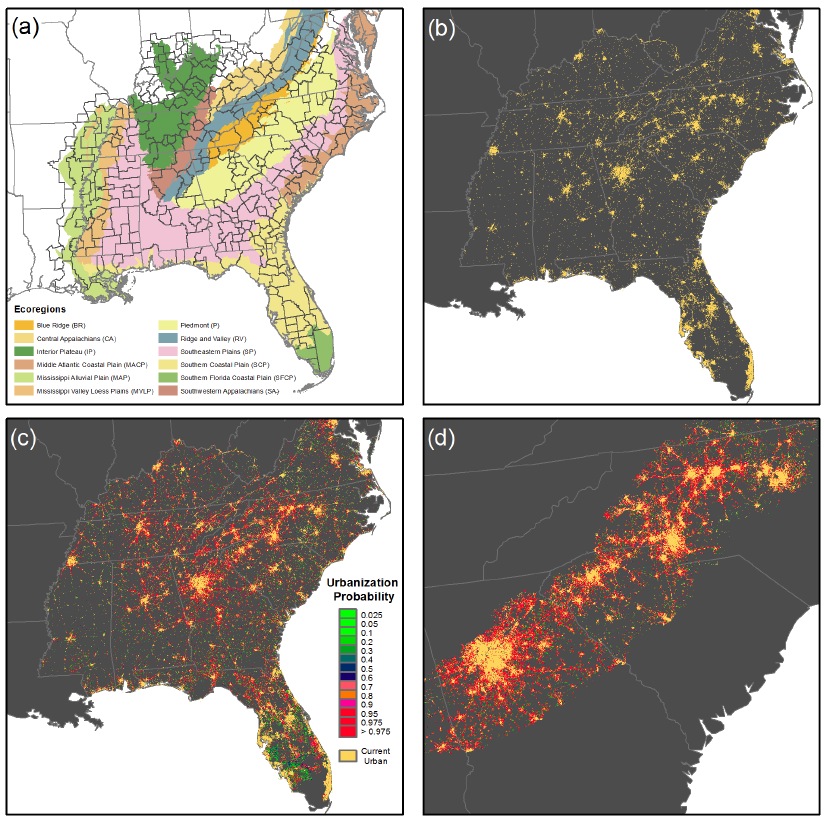
DEPARTMENT OF APPLIED ECOLOGY
NORTH CAROLINA STATE UNIVERSITY
Cities are expanding, and as they do urban sprawl–low-density urban development outside the urban core–is expanding even more rapidly. In some regions, expansion of suburban habitats as a result of shifts to automobile-dependent living has led to increases in the urban footprint even where populations have not shown large increases. Urban sprawl increases the connectivity among urban habitats while simultaneously fragmenting non-urban habitats such as forests and grasslands. These changes have a variety of effects on species and ecosystems, including impacts to water pollution, disturbance dynamics, local climate, and predator-prey relationships. Urban sprawl will also, almost certainly, influence the ability of species to respond to climate change, in as much as it creates barriers to the movement of species that cannot survive in cities and corridors for those who can. Knowledge about the potential future character of urban sprawl is thus useful to a variety of stakeholders, including resource managers, conservation organizations, and urban planners.
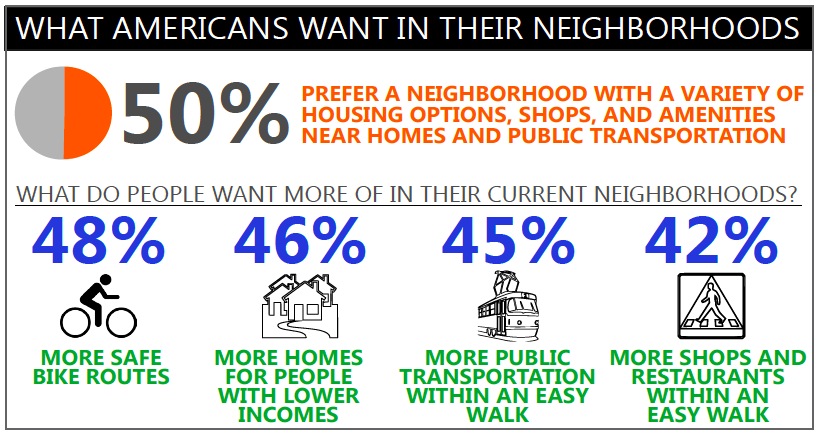
PARTNERSHIP FOR SUSTAINABLE COMMUNITIES
Many of our communities and housing options, built for a different time, are not what Americans want today. Research from the real estate industry shows that more people want to live in more convenient, walkable neighborhoods (Figure 1). A National Association of Realtors survey showed that half of Americans prefer a neighborhood with a variety of housing types, including multifamily and single-family homes; shops, restaurants, and amenities within walking distance; and nearby public transportation over a neighborhood with only single-family homes and few transportation options besides driving. Walkable communities are particularly important to millennials, who make up the largest percentage of the U.S. population; one research firm estimates that about 70 percent of them see walkability as “important” or “vital” when choosing a home.
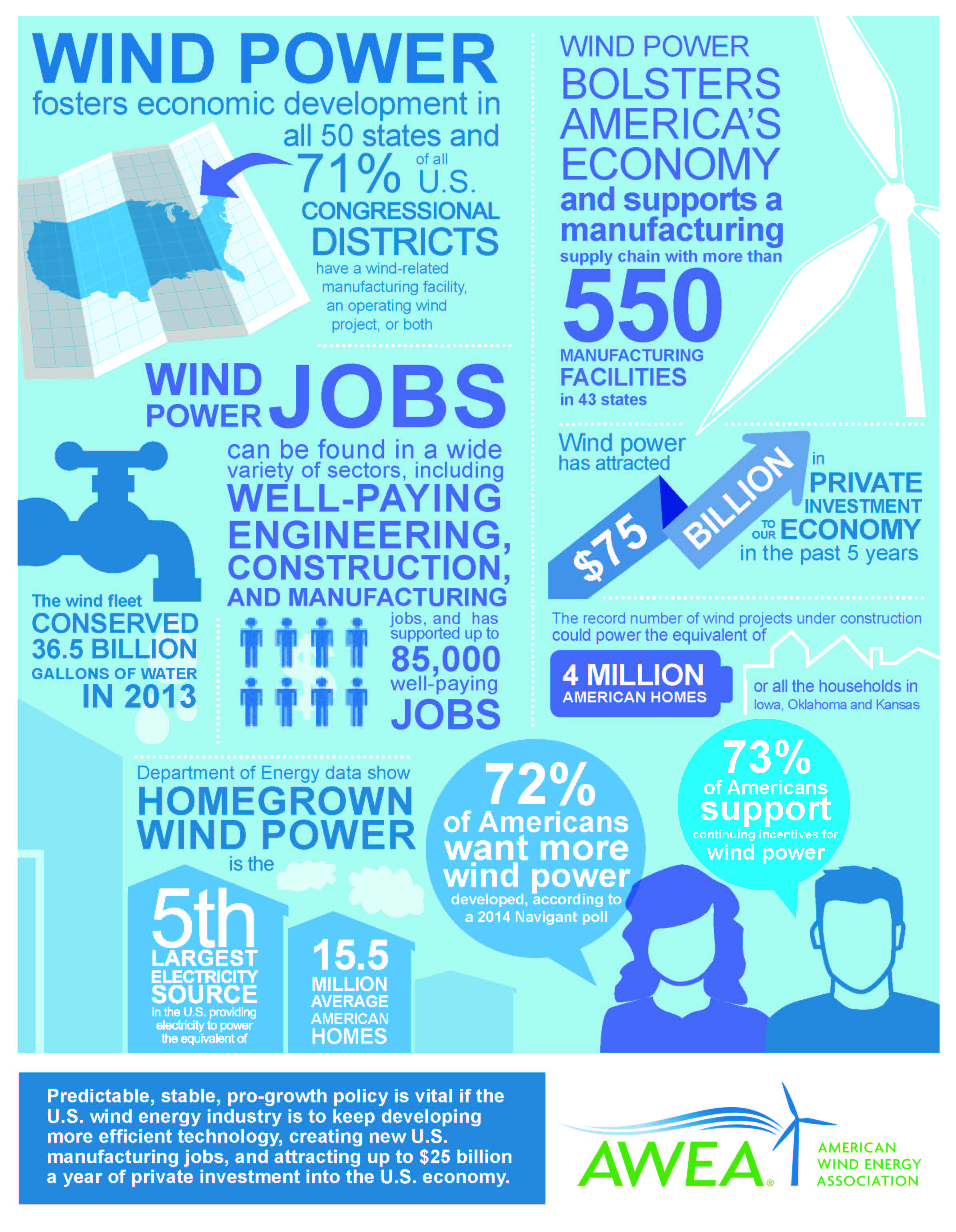
Wind Energy and the Economy: Infographic from the American Wind Energy Association
View this complete post...
NIST conducted a year-long experiment to prove it could build a modern, spacious house that would create as much energy as it uses. This “net-zero” house was home to a virtual family that consumed as much energy as an average American family of four. Thanks to the house’s energy efficient construction and appliances, and solar panels for producing electricity and hot water, the house made more energy than the family used. The house will serve as a testbed for new energy efficient technologies for decades to come.
View this complete post...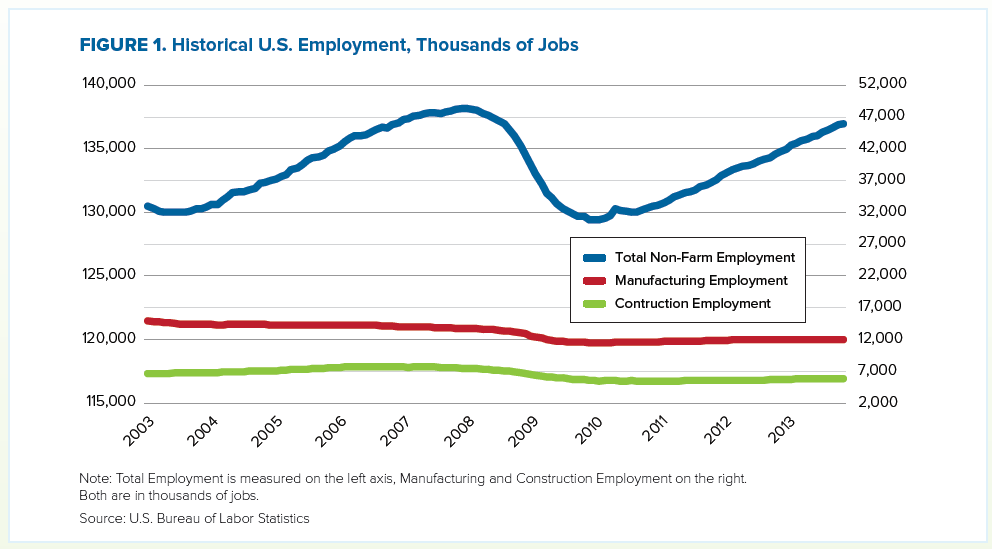
BLUEGREEN ALLIANCE
As the United States continues a slow but steady recovery from the recession triggered by the financial crisis of 2007 and 2008, investment is desperately needed to fuel economic growth and job creation—including modernizing large swaths of our nation’s infrastructure. Repairing the system of distribution pipelines that deliver natural gasto homes and businesses offers an opportunity to drive significant investment in our economy. Doing so will help to fix a critical part of our aging infrastructure while creating jobs and cutting global warming pollution—a winning proposition for both the environment and the economy.
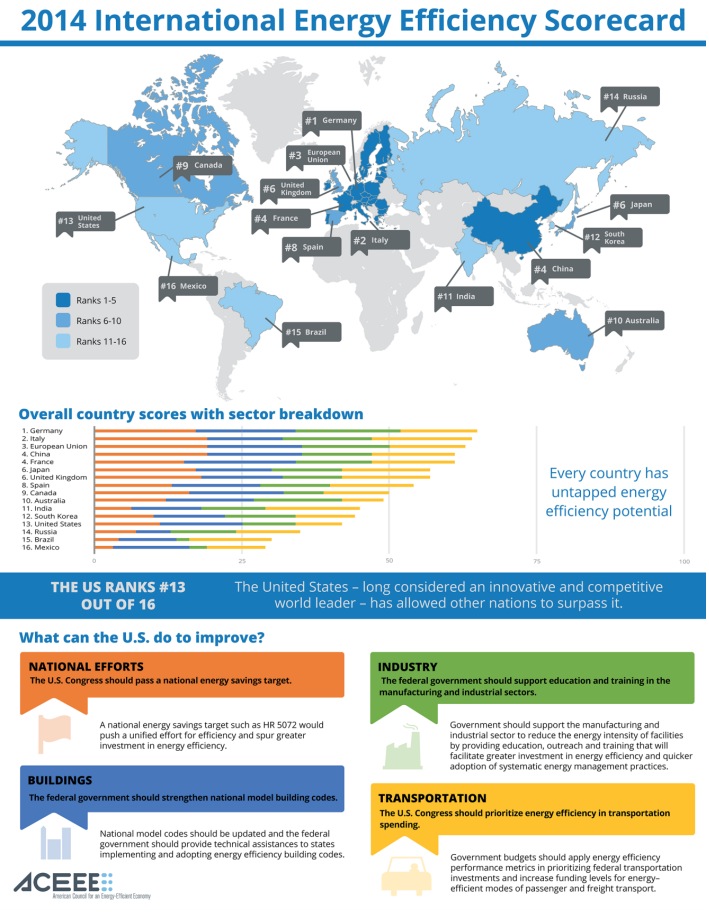
AMERICAN COUNCIL FOR AN ENERGY-EFFICIENT ECONOMY (ACEEE)
In this second edition of the International Energy Efficiency Scorecard, we analyze the world’s 16 largest economies covering more than 81% of global gross domestic product and about 71% of global electricity consumption. We looked at 31 metrics divided roughly in half between policies and quantifiable performance to evaluate how efficiently these economies use energy. The policy metrics were scored based on the presence in a country or region of a best-practice policy…The United States has made some progress toward greater energy efficiency in recent years, particularly in areas such as building codes, appliance standards, voluntary partnerships between government and industry, and, recently, fuel economy standards for passenger vehicles and heavy-duty trucks. However, the overall story is disappointing.
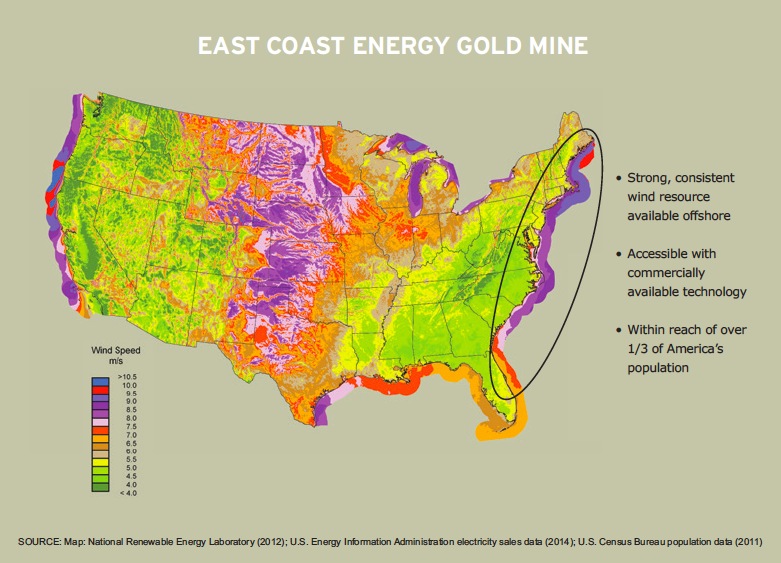
NATIONAL WILDLIFE FEDERATION
The Atlantic coastline is at the epicenter of America’s energy and environmental challenges, with state leaders currently facing critical decisions to meet the region’s growing energy demands and protect our communities and wildlife from the impacts of climate change. The cities, metropolitan areas, and sprawling suburbs that stretch along the East Coast have a massive, pollution-free energy source ready to meet these challenges –– offshore wind.
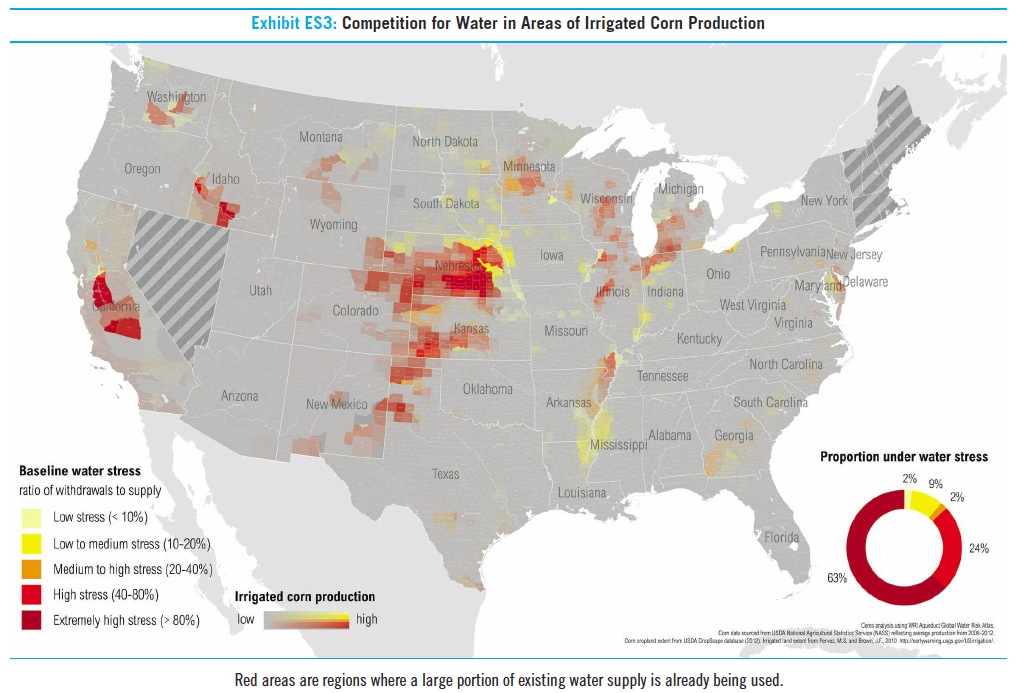
CERES
U.S. corn farmers are among the most productive and technologically advanced in the world, generating a record harvest of nearly 14 billion bushels in 2013—enough corn to fill a freight train longer than the circumference of the Earth. This production supports a mammoth agricultural sector comprised not just of farmers, but also major food, feed and energy companies that have an enormous stake in the long-term productivity and resilience of American agriculture. However, in the face of this bounty, three major threats to U.S. corn production loom: climate change, unsustainable water use and inefficient and damaging fertilizer practices.
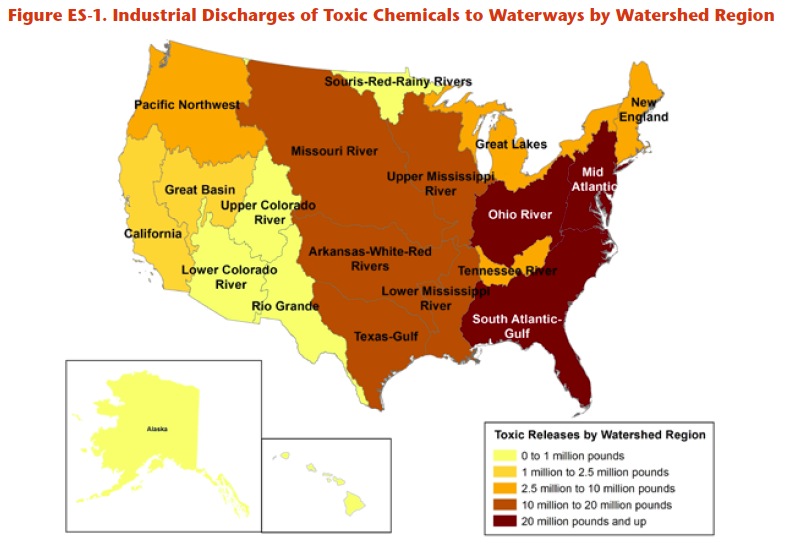
ENVIRONMENT CALIFORNIA
Industrial facilities continue to dump millions of pounds of toxic chemicals into America’s rivers, streams, lakes and ocean waters each year – threatening both the environment and human health. According to the U.S. Environmental Protection Agency (EPA), toxic discharges from industrial facilities are responsible for polluting more than 17,000 miles of rivers and about 210,000 acres of lakes, ponds and estuaries nationwide.
Follow InfrastructureUSA
Video, stills and tales. Share images of the Infra in your community that demands attention. Post your ideas about national Infra issues. Go ahead. Show Us Your Infra! Upload and instantly share your message.
Is the administration moving fast enough on Infra issues? Are Americans prepared to pay more taxes for repairs? Should job creation be the guiding determination? Vote now!
What do the experts think? This is where the nation's public policy organizations, trade associations and think tanks weigh in with analysis on Infra issues. Tell them what you think. Ask questions. Share a different view.
The Infra Blog offers cutting edge perspective on a broad spectrum of Infra topics. Frequent updates and provocative posts highlight hot button topics -- essential ingredients of a national Infra dialogue.
It is encouraging to finally see clear signs of federal action to support a comprehensive US infrastructure investment plan.
Now more than ever, our advocacy is needed to keep stakeholders informed and connected, and to hold politicians to their promises to finally fix our nation’s ailing infrastructure.
We have already engaged nearly 280,000 users, and hoping to add many more as interest continues to grow.
We require your support in order to rise to this occasion, to make the most of this opportunity. Please consider making a tax-deductible donation to InfrastructureUSA.org.
Steve Anderson
Managing Director
SteveAnderson@InfrastructureUSA.org
917-940-7125